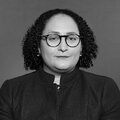The views expressed are the author’s own and not necessarily those of the Brennan Center for Justice.
In 2000, Florida became ground zero for the debate over poor election administration as Vice President Al Gore and Governor George W. Bush both thought for weeks that they had won Florida’s (then) 25 electoral votes and therefore the presidency. The Supreme Court resolved the controversy in the infamous Bush v. Gore ruling.
Florida’s election administration problems in 2000 included the poorly-designed butterfly ballot, in which the name of a candidate and the hole to be punched for the candidate were slightly askew; resulting in one vote total on day one and a different vote total in a mandatory machine recount. There were also long lines at many precincts, fueling voter dissatisfaction.
In 2012, Florida was the next Florida. Fortunately for the nation, the Electoral College vote between President Barack Obama and Governor Mitt Romney wasn’t close and did not hinge on Florida’s (now) 29 electoral votes. Florida in 2012 witnessed such long lines at certain polling places that voters had to wait seven hours or more to vote.
Part of the reason for the long lines four years ago was a ten-page ballot containing 12 proposed constitutional amendments with 4,500 words of explanation. Another factor was Gov. Rick Scott’s refusal to extend early voting hours. On Election Day in in Miami-Dade, the polls were still open at 1:42 am (technically into the day after the election) so voters who had made it to the polls could vote. This delay in poll closings led to a delay in tallying the results. Indeed it took Florida four extra days to figure out who had won the state because the vote was statistically close: 50% for Obama to 49.1% for Romney.
So how can Florida avoid again being America’s poster child for electoral dysfunction this year? A starting place is to adopt some of the best practices outlined by the Presidential Commission on Election Administration. For one thing—and this seems blindingly obvious—put more voting machines in more heavily-trafficked precincts. Too few voting machines practically guarantees disastrous long lines.
It would also help if lawmakers engaged in some restraint. It takes a 60 percent vote of both houses of the legislature to put a constitutional amendment on the ballot, and the G.O.P has supermajorities of both houses of the legislature. Several of the dozen 2012 ballot measures concerned taxes, but was it urgent for voters to decide whether to change the selection process for the student representative on the state university Board of Governors? (The amendment lost.)
This time around it appears that there will be four ballot measures on the November ballot: including one on medical marijuana and one on solar power. In the future, the Florida legislature might consider the impact of multiple ballot measures and show some moderation so that voters are never again confronted with a ten-page ballot.
Another fix is putting more effort into educating the public about early voting. Both the primary on August 30 and the November election will have early voting. But Floridians cannot take advantage of this option if they don’t know it exists. And the more voters who cast their ballots early, the fewer voters there are to get stuck in seven-hour lines on Election Day.
With a little common sense, Florida’s polls can function smoothly in 2016. Maybe this time around the nation will know in a timely manner how the nation’s third-most populous state voted for President.
(Photo: Thinkstock)
